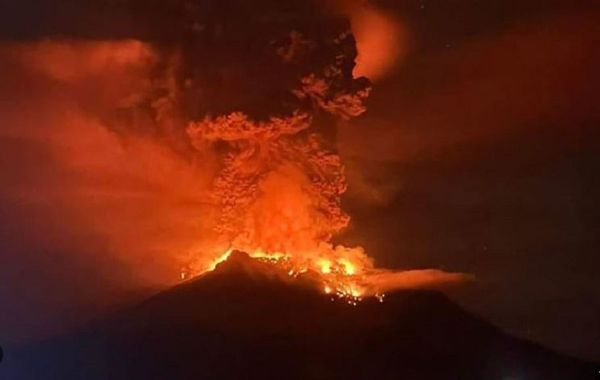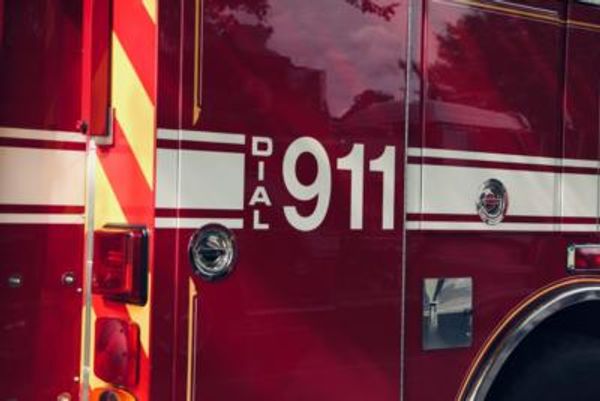
A state of alert has been issued for Australia’s capital and a total fire ban is in place in southern parts of New South Wales and most of Victoria due to forecast hot and dry conditions.
Melbourne and Canberra are predicted to reach highs of 43 and 41 degrees on Friday and the weather is expected to worsen fire situations across two states and the capital territory.
Fire weather warnings have been issued for the Monaro alpine, southern ranges, and southern slopes fire areas in NSW and the Australian Capital Territory, with the Bureau of Meteorology warning warm, dry and windy conditions will increase the risk of fires during the day.
The 18,500-hectare Orroral Valley fire south of Canberra is currently at advice level, and residents in Tharwa Village, Boboyan Road, Apollo Road, Top Nass Road and Nass Road have been advised to remain vigilant.
Extremely high temperatures and low humidity are forecast over the weekend. All fires in New South Wales are at advice level, but NSW Rural Fire Service deputy commissioner Rob Rogers told Sky News the heatwave was going to be an issue for fires on the south coast of NSW, in the Snowy Mountains and the ACT over the next few days.
He said the Orroral Valley fire was expected to cross over into New South Wales on Friday night.
“I think it’s fair to say it’s going to be a tough weekend for firefighters and residents in those areas,” he said.
He said firefighters did manage to get some containment work done this week, but until areas ahead of fires were burnt out, there was no containment.
Does climate change cause bushfires?
The link between rising greenhouse gas emissions and increased bushfire risk is complex but, according to major science agencies, clear. Climate change does not create bushfires, but it can and does make them worse. A number of factors contribute to bushfire risk, including temperature, fuel load, dryness, wind speed and humidity.
What is the evidence on rising temperatures?
The Bureau of Meteorology and the CSIRO say Australia has warmed by 1C since 1910 and temperatures will increase in the future. The Intergovernmental Panel on Climate Change says it is extremely likely increased atmospheric concentrations of greenhouse gases since the mid-20th century is the main reason it is getting hotter. The Bushfire and Natural Hazards research centre says the variability of normal events sits on top of that. Warmer weather increases the number of days each year on which there is high or extreme bushfire risk.
What other effects do carbon emissions have?
Dry fuel load - the amount of forest and scrub available to burn - has been linked to rising emissions. Under the right conditions, carbon dioxide acts as a kind of fertiliser that increases plant growth.
So is climate change making everything dryer?
Dryness is more complicated. Complex computer models have not found a consistent climate change signal linked to rising CO2 in the decline in rain that has produced the current eastern Australian drought. But higher temperatures accelerate evaporation. They also extend the growing season for vegetation in many regions, leading to greater transpiration (the process by which water is drawn from the soil and evaporated from plant leaves and flowers). The result is that soils, vegetation and the air may be drier than they would have been with the same amount of rainfall in the past.
What do recent weather patterns show?
The year coming into the 2019-20 summer has been unusually warm and dry for large parts of Australia. Above average temperatures now occur most years and 2019 has been the fifth driest start to the year on record, and the driest since 1970.
Is arson a factor in this year's extreme bushfires?
Not a significant one. Two pieces of disinformation, that an “arson emergency”, rather than climate change, is behind the bushfires, and that “greenies” are preventing firefighters from reducing fuel loads in the Australian bush have spread across social media. They have found their way into major news outlets, the mouths of government MPs, and across the globe to Donald Trump Jr and prominent right-wing conspiracy theorists.
NSW’s Rural Fire Service has said the major cause of ignition during the crisis has been dry lightning. Victoria police say they do not believe arson had a role in any of the destructive fires this summer. The RFS has also contradicted claims that environmentalists have been holding up hazard reduction work.
“Those fires have been coming out in fingers from the mountain ranges, and they will continue to do that until we actually put in backburns to burn out that fuel so they can’t keep coming out,” he said.
“We’ve actually done a huge amount of work this week… but obviously we can’t get everything done.”
A map put out by the RFS on Friday highlights the potential spread of the Orroral fire over the weekend.
In Victoria, almost all of the state is apart from Gippsland is at fire warning level, with very hot conditions and a north to northwesterly wind strengthening in the morning, and becoming gusty in the afternoon over western and central districts.
Isolated thunderstorms could arrive in the afternoon and evening.
There are still 10 fires in Victoria, and one fire is at watch and act level, in Bendoc in the state’s north east, after being at emergency warning level overnight.
Emergency management commissioner Andrew Crisp told 3AW Radio it was going to be a “significant challenge” on Friday, and there was a potential for dry lightning in the state that could spark more fires.
“It’s going to be a tough day … there’s a strong focus on this as you can imagine. The west of the state is so dry through to the centre of the state,” he said.
Victorians are being warned to expect brownouts on Friday. The Victorian energy, environment and climate change minister, Lily D’Ambrosio, said the power supply would be “very tight” due to the hot weather.
“There are many variables that can affect power supply including bushfires, stress on transmission lines and ageing coal plants that can fail with no notice, like we saw last night,” she said.
The Australian Energy Market Operator has asked people to limit their power use between 1pm and 8pm, limit air conditioning to between 23 and 26 degrees, and to switch off pool pumps.
“While AEMO is not currently forecasting supply shortfalls or the need for involuntary load shedding, heatwave conditions that drive high electricity demand, combined with unplanned generation or transmission outages, could result in electricity disruptions,” AEMO said.







